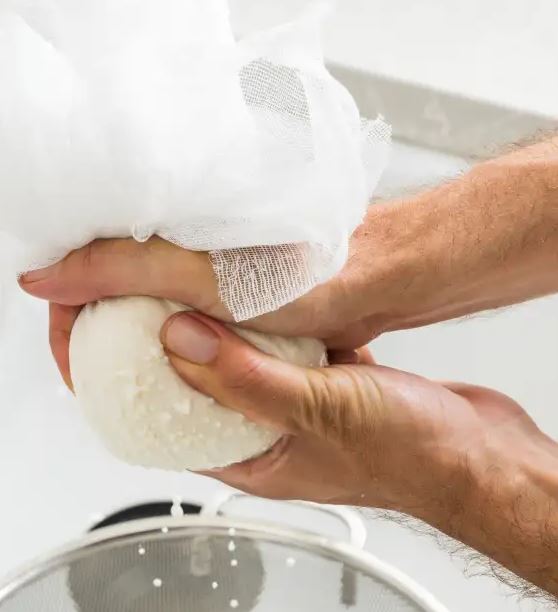Quite a good number of people complain that cheesecloth isn’t durable. Well could this be because they do not understand the different types of cheese cloth and their uses? If this is the case, lets answer the basic question; ‘What is cheese cloth used for?’. Cheesecloth is a versatile and lightweight fabric that has been utilized for various purposes for centuries. Due to its fine texture and loose weave it’s an ideal material for culinary, craft, and household applications. The potential uses of cheesecloth are endless. They range from straining liquids and creating cheese to crafting Halloween decorations and polishing furniture. In this essay, we will explore the diverse ways in which cheesecloth is used. Moreover, we will discuss its significance in different aspects of everyday life. Let’s delve into the fascinating world of cheesecloth and uncover the boundless possibilities it offers.
Primarily, the history and cultural significance of cheesecloth in different parts of the world add layers of depth to its utilization. Moreover, its role in traditional cheese-making processes and various cultural ceremonies is evident. This connection reflects the deeply rooted connection between cheesecloth and human practices throughout history. Therefore, understanding the historical and cultural context behind the uses of cheesecloth enriches our appreciation for this humble fabric and its enduring relevance in modern times.
As we delve deeper into the world of cheese cloth, we are continually amazed by the myriad ways in which it enriches and influences various facets of human life. Specifically, its adaptability, historical importance, and relevance in contemporary practices make it an extraordinary fabric with enduring value. Ultimately, the journey of exploration into the different uses of cheese cloth unveils its practical utility. Additionally, it depicts its cultural, artistic, and historical significance, making it a truly remarkable and timeless material.
1. Cheese Cloth use In Gardening And Agriculture
Cheesecloth’s versatility extends far beyond its common culinary and crafting uses. One of the lesser-known ways in which cheesecloth is used for is gardening and agriculture. Due to its lightweight and breathable nature, cheese cloth use in gardening protects plants from pests while still allowing air and sunlight to reach the plants. Additionally, its ability to retain moisture makes it an ideal farming material. Its mainly used for wrapping the roots of newly planted trees and shrubs. This aids in their successful transplantation and growth.
2. Skincare And Beauty
Lately, cheesecloth has found its way into the world of skincare and beauty. Apparently, many skincare enthusiasts and professionals use cheese cloth as a gentle and effective way to exfoliate the skin. Additionally, its used remove makeup, and apply facial masks. Due to its soft texture and ability to hold and release liquids, its a perfect tool for various skincare routines. Moreover, it provides a natural and eco-friendly alternative to disposable wipes and cotton pads.
3. Cultural And Traditional Practices
Beyond its practical applications, cheesecloth has also been an integral part of various cultural and traditional practices. In some cultures, cheese cloth use in religious ceremonies and rituals, symbolizes purity and the act of cleansing. Its association with purity and cleanliness has made it a valuable and symbolic fabric in many cultural traditions. This highlights its significance beyond its physical attributes.
4. Artistic And Creative Arts
Cheesecloth’s significance in everyday life becomes even more profound when we consider its role in artistic and creative pursuits. Artists and designers often use cheese cloth in their works to add texture and depth to their creations. Whether it’s for sculpting, mixed media art, or costume design, the unique properties of cheesecloth make it a favored material among creative minds. Its ability to hold shape when coated with various mediums allows artists to experiment and push the boundaries of traditional art techniques.
Cheese cloth use in the world of art and crafting transcends its practical uses. It goes a long way in adding a layer of depth and creativity to various projects. Its porous and absorbent nature makes it an ideal medium for creating intricate and textured art pieces. Oftenly, artists incorporate cheesecloth into their mixed media artworks. This is aimed at utilizing its ability to hold and manipulate different types of paints, dyes, and adhesives. The result is a dynamic and visually captivating form of expression, where the fabric becomes a canvas for imagination and innovation.
5. Cheese Cloth use In Food Preservation
In addition to its artistic value, cheesecloth also plays a significant role in the preservation of food. Specifically in the process of aging certain delicacies. Commonly, the fabric is used in food preservation techniques such as making clarified butter, straining liquids for fruit preserves. This is in addition to ripening cheeses and wrapping aged cheese. The fine weave of cheesecloth enables it to filter out impurities while allowing liquids to pass through, resulting in clear and flavorful end products.
Conclusion
As we continue to explore the diverse cheese cloth uses, we can appreciate its remarkable adaptability and significance across a wide range of fields. From culinary arts to agriculture, skincare, and cultural traditions, cheesecloth continues to prove its worth as a versatile and invaluable fabric, enriching various aspects of everyday life.
